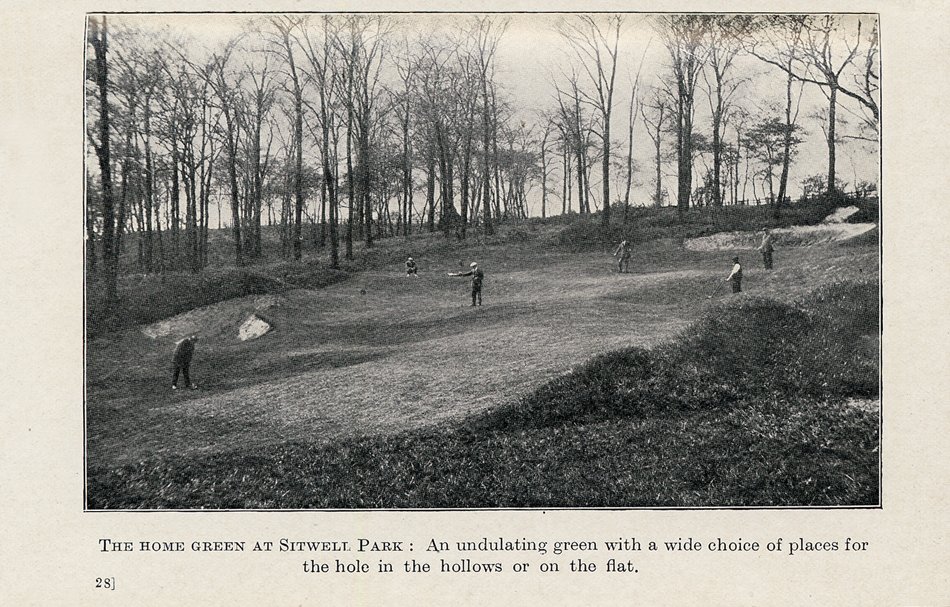IMAGINING THE COURSE
For purists, the only true setting for golf is the land of the links, the sandy stretches of property considered useless for agriculture that were left unoccupied along the Scottish seacoast. It was here that the earliest golf courses were laid out, taking advantage of the natural swales of the undulating landscape, rough patches of sea grass, small dunes and sandy burrows exposed by foraging sheep, and twisting streams and tidal ponds. Remade over many years into the fairways, bunkers, roughs, water hazards, and greens of St. Andrews and other classic Scottish courses, the links remained for many the model of what a golf course should be.
Transported from Scotland to England and then across the Atlantic to America, golf course design at first relied on the accumulated personal experience of Scottish golfers like Old Tom Morris, William Park, Jr., and Willie Dunn, who were given the responsibility of shaping new courses. The rapid growth of the game and increasing sophistication of players, however, argued for a more systematic understanding of the structure of the game and the ideal course. Charles Blair Macdonald of Chicago was among the first to abandon the so-called "penal" course that punishes the player who strays from an established ideal path and to conceive instead a "strategic" course that requires the golfer to choose one of several alternative routes to the green. Dr. Alister Mackenzie, a British physician and passionate golfer, expanded on these developments in his pioneering and influential text, Golf Architecture (1920). Among the key features of Mackenzie's ideal course were that it require little walking between a green and the next tee, that every hole should have its own distinct character, and that the golfer should be required to use a variety of strokes and clubs to achieve a successful round.
In recent decades, the once casual craft of golf architecture has become an ever more highly sophisticated business. Pete Dye, Tom Fazio, and Robert Trent Jones, Jr., are widely recognized as being among the most successful contemporary golf architects. New strains of grass are being developed for different climatic zones. Desert courses are being built in areas that would once have been thought inhospitable to golf. Lavish new golf clubs and entire golfing communities are becoming a common feature of America's leisure-oriented culture. Books by and about the latest golf architecture trace the imaginative reshaping of the natural landscape and the ways in which it is being transformed into the distinctive fairways, roughs, bunkers, and greens of thousands of individual new golf courses.




